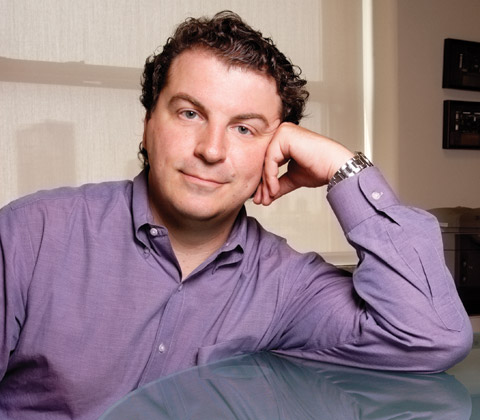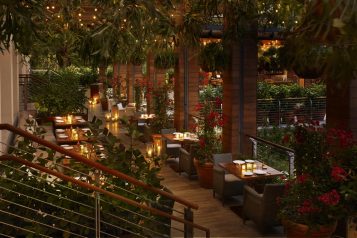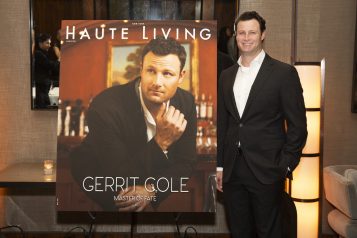Real estate appraiser and consultant Jonathan Miller dissects the residential property market, looking at the value relationships that define New York luxury real estate.
By Jonathan Miller, President/CEO
Miller Samuel Inc.
A New York Real Estate Appraisal & Consulting Company
Luxury Defined by a Bundle of Amenities
I have always been intrigued by the idea of a bundle of amenities that define a luxury property. When I think of the term bundle, I think of the bundle of rights as it relates to the rights of owners to their property. But in the context of this discussion, the term bundle is quite different. Bundling means viewing amenities as a package rather than a la carte. It is the concept that a collection of amenities, rather than a specific item, define a luxury property. Bundling applies to both new development and re-sales and despite the fact that it is the key to the value of a luxury property, it is often overlooked. As the saying goes, the whole is greater than the sum of the parts.
The combination of amenities provides the true character of a luxury property. This article is not meant to be a narrative on which amenities should be included, but rather how the concept works. I am willing to bet that readers of Haute Living New York know what luxury is, or they wouldn’t be reading this publication in the first place. I’ll also venture to guess that the range of interpretation of the term luxury varies quite a bit. In order to discuss the bundling of amenities, lets attempt to define what luxury really means.
My first reaction to the term luxury is I’ll know it when I see it. The interpretation is being a balance of personal taste, wants and needs, financial status, experience and age. The term is in danger of being over used and is often applied incorrectly to residential property. This has already happened in Manhattan, where the term luxury is applied to virtually any co-op, condo or rental property in a building that has a doorman. This covers a broad range of properties. I think many would be challenged to find a new development built over the last ten years in New York that did not have the word luxury in their marketing materials. Such a broad definition sets the bar of expectations at a low level.
When analyzing the housing market, I like to quantify luxury by sales or rental price, because it is more objective. Membership in an upper end price strata infers high quality amenities or higher potential. Being more numbers orientated, I measure the luxury real estate market by looking at a specific geographic area or by looking at the top ten percent of all sales or rental prices in a given time period. Within that data set, specific amenity patterns can be identified. The problem with defining luxury as a price threshold rather than as a percentage, is that prices are a moving target. As prices rise, more properties enter into the luxury definition based on sales price and therefore the meaning is diluted.
Housing patterns of luxury property are often different than patterns of the remainder of the housing market, inferring that the bundle of amenities associated with the properties are different. Here’s a brief look at three New York housing markets which demonstrate how the luxury sector can behave differently than the overall market.
According to the third quarter statistics on the Manhattan housing market I recently compiled, the luxury market saw an average sales price of $4,509,833, up 17.9% over the average sales price of $3,824,079 in the same period last year. This appreciation in the luxury sector outpaced the overall housing market, which saw an annual appreciation rate of 12.1%. The average sales price of a Manhattan property was $1,288,748 in the third quarter of 2006, up from the $1,149,813 average sales price from the same period last year.
The North Shore of Long Island saw annual appreciation rates that were double the rate of the overall market this past spring (third quarter statistics were not completed when this article went to press). The average sales price of a property in the North Shore was $1,035,146, up 10.4% over the same period last year when the average sales price was $937,409. At the same time, the average sales price of all Long Island properties, excluding the Hamptons was up an average of 5.5% over the same period, reaching $509,474 in the second quarter of 2006 as compared to the $482,821 average sales price reached in the same period in the prior year.
In the Hamptons and The North Fork, the upper 20% of the market as measured by price has continued to see more sales volume, relative to its market size, than the remainder of the market.
Since we have established that a luxury market can behave differently, or is not necessarily in sync with the remainder of the housing market, then it follows that the type of amenities that make a property considered luxury are different than the rest of the market.
But lets get back to the bundle of amenities in luxury properties. When considering the value of a property, it is the combination of amenities that make the property special. Translation: worth more. In Manhattan, pre-war (built before World War II) co-op apartments are generally worth more than post-war apartments. Why? Because this housing stock is more limited in availability, and is defined by its bundle of amenities – namely plaster wall construction, higher ceiling heights, better soundproofing and fireplaces. They do not command a premium simply due to one of these amenities. The premium achieved is because of the package, or the right combination of amenities.
Developers of luxury property provide painstaking attention to such details. If the caliber of one particular amenity, such as the quality of the kitchen appliances, is not consistent with the quality of construction in the kitchen, the cost savings to the developer may be significantly less than the loss in value. In luxury development, it is often an all or nothing construction strategy.
The perception of the value of a property by a potential purchaser is the interplay between the primary amenities in the bundle. Beautiful beachfront views, pool, cabana and sun deck can be a great combination of amenities, in addition to an already great house. If the owner of the property considered making additional improvements, such as adding a hot tub or expanding the sun deck, such improvements may or may not add to the overall value of the property in actual dollars.
Why? We term the value of an amenity as its contributory value as opposed to cost. An amenity such as a hot tub may be considered overkill in one market, in another, a fundamental amenity. In the latter scenario, the lack of a hot tub may actually decrease the property value more than its existence would contribute to value. In other words, it is needed as an amenity simply to remain competitive.
I am often asked the question, “How much of my costs will be recouped in the property value by adding this specific amenity?” My favorite answer is always, of course, “It depends.” The value of a particular amenity is dependent on what bundle of amenities already exist or will be added to the property at the same time and how this aligns with market expectations.
So before you spend a bundle, consider whether the amenity is a personal “must have” or it is something that is expected by buyers. That goes a long way in determining whether or not you should get that hot tub.





















